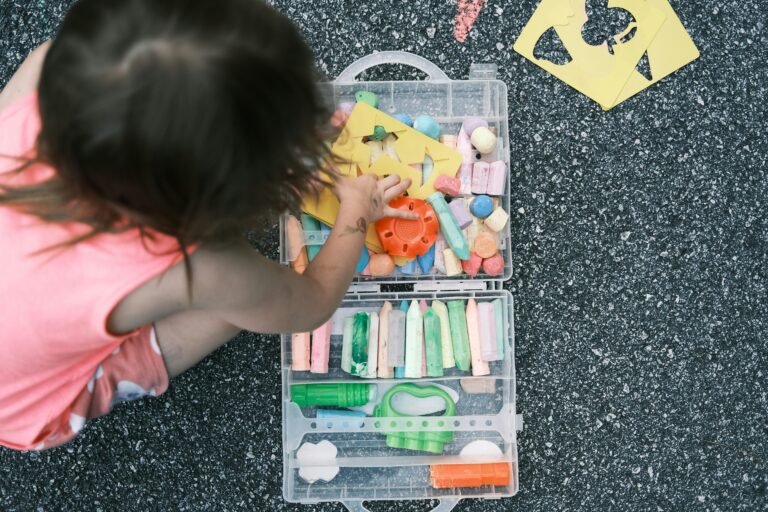If you’re a parent or caregiver, you’ve probably experienced the toy overload dilemma: piles of toys everywhere, but kids still overwhelmed or bored. It turns out, having ALL the toys out at once can actually make it harder for little ones to focus and truly enjoy playtime. That’s where smart toy rotation comes in—a simple, effective way to keep play fresh, fun, and stress-free. In this article, we’ll explore creative toy rotation ideas to help reduce overwhelm for kids, boost their creativity, and keep your home a little tidier too. Let’s dive in!
Table of Contents
- Understanding the Benefits of Smart Toy Rotation for Your Child’s Development
- How to Choose Which Toys to Rotate and When to Switch Them Out
- Creative Toy Rotation Schedules That Fit Your Family’s Lifestyle
- Tips for Making Toy Rotation Fun and Engaging for Kids
- In Retrospect
Understanding the Benefits of Smart Toy Rotation for Your Child’s Development
Introducing a thoughtful rotation system for your child’s toys is a powerful way to keep playtime engaging and developmentally beneficial. When toys are thoughtfully rotated, children are less likely to feel overwhelmed by an abundance of options. This promotes focus and creativity, as kids are encouraged to deeply explore a smaller selection of toys instead of quickly losing interest. Additionally, a structured rotation helps maintain novelty, sparking curiosity and sustained attention spans that directly support cognitive growth and problem-solving skills.
Smart toy rotation also cultivates essential life skills by gently encouraging organization and responsibility. By regularly swapping toys, children learn to appreciate each toy more and develop an understanding of taking care of their belongings. Caregivers can easily implement this system using simple methods like:
- Designating small, labeled bins for different toy categories
- Scheduling weekly or bi-weekly rotation intervals
- Observing which toys naturally captivate your child’s interest to tailor future rotations
Ultimately, smart toy rotation transforms playtime into a dynamic and developmental adventure, turning a cluttered playroom into a curated learning environment.
How to Choose Which Toys to Rotate and When to Switch Them Out
Start by sorting toys into categories based on their type and developmental benefits, such as creative play, motor skills, or problem-solving. Choose a balanced mix from each category to keep your child engaged without overwhelming them. Look for toys that are open-ended and can be used in multiple ways, as these tend to hold interest longer and inspire creativity. Remember, the quality of interaction far outweighs the quantity of options available.
When deciding when to switch toys out, observe your child’s play patterns closely. If a toy gets consistently ignored for a week or more, or if your child shows signs of boredom, it’s time to rotate it out. Aim for a rotation cycle of about every two to three weeks, but always stay flexible—some toys may captivate longer, while others might lose appeal faster. Creating a simple rotation schedule that you can follow helps maintain variety without overwhelming your little one or yourself.
Creative Toy Rotation Schedules That Fit Your Family’s Lifestyle
Designing a toy rotation schedule that seamlessly integrates with your family’s rhythm can turn playtime into a joyful, stress-free experience. Consider aligning toy rotations with your family’s weekly routine—for example, swapping out puzzles and board games on weekends when there’s more time for group play, while introducing quieter, solo toys during school nights. This subtle tailoring ensures every toy finds its perfect moment to shine without overwhelming the kids with too many options at once.
Another approach is creating themed rotations aligned with your children’s interests or seasons. You might create bins such as “Outdoor Adventures” for spring, “Creative Crafts” for rainy days, or “Learning & Discovery” to stimulate curious minds right before school. Utilizing clear labels and having an easy-to-follow rotation calendar not only keeps toys fresh but also helps kids feel involved and excited about what’s coming next. Less clutter, more engagement—that’s the parenting win!
- Rotate toys weekly or biweekly: keeps children curious and focused.
- Use baskets or bins: simple storage makes swapping easy.
- Tailor rotations to energy and attention levels: choose calm toys during busy days.
Tips for Making Toy Rotation Fun and Engaging for Kids
To keep toy rotation exciting, try creating a themed box for each rotation cycle — like “Adventures,” “Building Time,” or “Creative Corner.” Kids love the anticipation of exploring a new theme, which helps maintain their interest and encourages imaginative play. Incorporate their interests when planning these themes to make it feel like a special surprise tailored just for them. Adding colorful labels or fun descriptions to each box can also build enthusiasm and pride in their playtime choices.
Make the process interactive by involving your little ones in the rotation routine. Set a timer and play a “toy swap” game where everyone picks a toy to put away and a new one to bring out. Use a cozy corner or designated play mat for unveiling the new toys — it’s like unwrapping a gift! Plus, include a small notebook where kids can doodle or write which toys they’re excited about or what adventures they plan to have next. This not only makes rotation a fun event but also teaches them organization and decision-making skills.
- Rotate toys weekly or bi-weekly to keep things fresh without overwhelming your child.
- Limit the number of toys accessible at once to foster deeper engagement.
- Use clear containers so kids can peek inside and build anticipation.
- Encourage cooperative play by rotating toys among siblings or friends.
In Retrospect
And there you have it—smart toy rotation doesn’t have to be complicated! With a little planning and creativity, you can create a clutter-free, engaging play space that keeps your kids excited and focused. Remember, it’s all about quality over quantity and giving their little minds a chance to fully explore and enjoy their favorite toys. So go ahead, try out these ideas, and watch as your kiddos thrive without feeling overwhelmed. Happy rotating!

